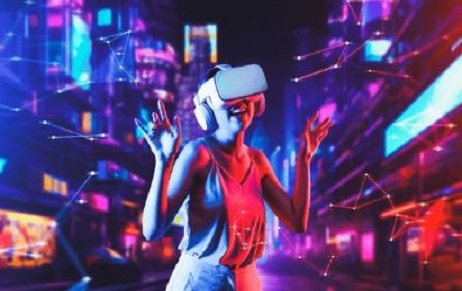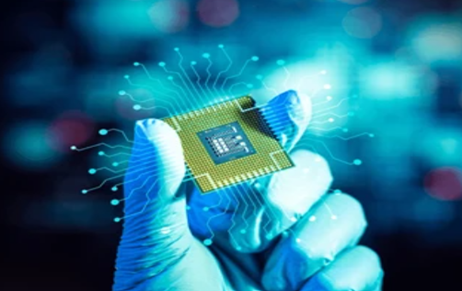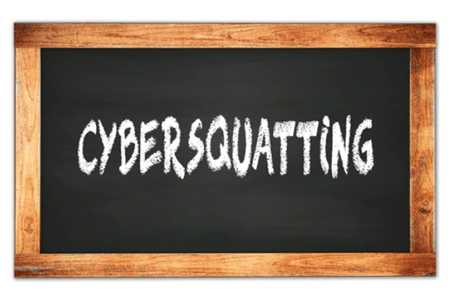Currently, semiconductors act as the foundation for advancements in the technological field such as smartphone…
Virtual Reality Technology: Innovations and Applications
INTRODUCTION
Being applicable in many ways virtual reality or VR has now revolutionized several industries or had a new improved version altogether. Virtual reality (VR) is applied to gaming and entertainment going through 360 videos and narrative storytelling. Virtual reality (VR) enhances learning in training and education through creating virtual classrooms and educational simulation. Healthcare employs VR in pain management and training of surgeons.[i]
While in the field of architecture and design architectural visualization is the process of creating three-dimensional models of structures and areas, while virtual tours allow potential buyers to view and inspect properties during their construction. Companies in the real estate and tourism sectors use virtual tours to allow potential buyers to visually experience locations from afar. Virtual reality provides a different learning environment because it reconstructs historical places and events. Social VR spaces, meetings, and other gatherings enhance social interaction in VR worlds. OC is used in the medical practice to treat phobias, PTSD, and anxiety disorder through exposure therapy, physical therapy and other purposes. VR-supported exercises extend to the sphere of physical therapy and rehabilitation. The audience is affected in a new manner by the artwork of VR art and installations. Military training, sports and training, maintenance and repair, and product creation and prototyping are some of the applications of VR in manufacturing and Industrial environment. Sports lovers can gain a new perspective by being able to play games and events in Virtually Real Environment systems. Military and defense field involves the use of VR simulations in planning, vehicle driving, and combat actions. It means that further innovations within VR are possible as gears become accessible and popular with time and more innovative improvements are expected in the future.
SOFTWARE INNOVATIONS: TYPES AND TECHNOLOGICAL ADVANCEMENTS
Some of the industries that are experiencing technological developments as a result of software developments include artificial intelligence (AI), machine learning, blockchain, cryptocurrency, cloud computing, virtualization, cybersecurity, augmented reality (AR), quantum computing, natural language processing (NLP), data analytics, big data, 5G, edge computing, DevOps, and more.[ii]

Areas such as natural language processing, self-driving cars, facial recognition systems, recommendation engines, and machine learning have all been revolutionized by AI & ML. IoT software platforms are used for analysis and immediate processing of the data received, while supply chains and financial transactions can be handled through smart contracts using blockchain. Cloud computing and virtualization ensure the easy development and distribution of software but the deployment, scalability and management of applications is provided by newer technologies that include container technologies such as Docker and Kubernetes. AI Enhanced Security, Zero Trust Architecture and development of AR & VR Software come under cybersecurity. Quantum technology computing is on the increase and this is facilitating the development of quantum algorithms which could solve such tough cryptography and optimisation problems. Whereas, NLP stands for Natural Language Processing implemented in social analysis and sentiment analysis the improvements of the NLP enabled the enhancement of complex chatbots, virtual assistants, and language translation services. It is now possible to process and find results and occasional statistics from big data tools and platforms in large datasets for findings and decision making for industrial and financial trades immediately. Both IoT and AI solutions are capable of processing and sharing information at high data rates and minimal end-to-end latency due to 5G and edge computing. As various software developments are always in the process of the change and influencing the progress of various industries, it is important for the professionals as well as organizations to keep up with their competitors and benefit from the innovations.[iii]
INTERSECTION OF METAVERSE, VIRTUAL REALITY, AND SOFTWARE DEVELOPMENT
Since the metaverse requires transactions as well as business to occur, software application is required in developing currencies, and payment within the metaverse. Thus, security is important, as actual and virtual assets, as well as personal data and privacy, should be protected. Although educational software is intended for training simulations and virtual classes, game developers have the possibility to introduce virtual real-life game experiences. Improving experiences and services in the metaverse heavily relies on data and unyielding consumer analytics. To ensure that there is a smooth experience when using a particular product across these platforms, there is need to consider cross platform compatibility. AI and machine learning can assist in content generation, provide user customization and enhance the overall user experience. They may use the world building software to build realistic environment, simulate physics and construct a virtual world. Some of the metaverse projects that explore the use of blockchain and smart contracts in regulating owning and managing personal and virtual properties need decentralization and an interface with blockchain. Alongside virtual reality integration, augmented reality (AR) integration is also required to place digital information on top of the real world to create the metaverse. Due to the integration of the metaverse, virtual reality, and software development, developers and companies can create loaded, dynamic, and metaverse features experiences.
INDIAN PATENT ACT: LEGAL FRAMEWORK
OVERVIEW OF THE INDIAN PATENT ACT
according to WIPO (World Intellectual Property Organisation) a patent is a right granted for an invention which is a product or a process, that is a new way of doing things or offer a new technical improvement for an existing solution to a problem. For patent protection, technical information about the invention must be published in the patent application. The Indian Patent Act has provisions for the patents for new inventions that have an idea step and can be industrially used. India grants patents and the duration of a patent is 20 years from the date on which the application has been filed.[iv]
PATENTABILITY CRITERIA: NOVELTY, INVENTIVENESS, AND INDUSTRIAL APPLICABILITY
The patentability of an invention is determined based on three main key criterias: non-obviousness of the said product, novelty and inventiveness, as well as the industrial application of the invention. These criteria work collectively to evaluate the originality, novelty, and usefulness of an invention. NOVELTY: Under novelty, one of the crucial functions that an invention should possess is that it should not been patented by prior or existing art. Information prior art may be any information which is easily available or, available to the public before the filing of the patent application. For a global standard to occur and for an invention not to be known previously, it should not have been used, described or made available to the public anywhere in the world prior to the filing of the application for the patent. Public domain is comprised of the things that are not allowed Public disclosures, publications, public use or any means by which the invention is made available to the public in any manner can influence or eliminate the novelty of an invention.
INVENTIVENESS (NON-OBVIOUSNESS):
Non-obviousness, which is also called inventiveness, is a key component of the patenting process that determines whether the invention involves a step of invention or exceeds the level of obviousness to a person in the technical field in question. The current international patentability test includes that an invention should not be sufficiently obvious to a person skilled in the field at the time of filing for a patent. It consists in an evaluation of whether a proposed invention might have been obvious to an average person skilled in the art.
INDUSTRIAL APPLICABILITY:
Despite the fact that industrial applicability in patents focuses on the concept of practical use or usefulness of the invented product in an industry, there is no universally accepted definition for this term. In the case of protecting the invention on the international level the subject invention should have preferable a particular, bona fide, and tangible use. It should be capable of being made or used in an industry, or to have some manufacturing or utilitarian function. The exclusions in patentibality: contributions which are not or can neither be exploited for industrial purposes may include inventions with no actual applications or those that are purely academic. These criteria taken together assist in determining the novelty of an invention and hence the extent of the patent grant so that only inventions that deserve patents are awarded the grant. However, it is relevant to highlight that the given criteria may be defined and implemented in different ways by different patent offices and jurisdictions. When applied to the software and business method patents particularly in United States, the criteria of non-obviousness or inventiveness has remained a topic of discussion. For example, the decisions of the Supreme court in the cases that included Alice Corp. v. CLS Bank International and Bilski v. Kappos also enlightened Kappos regarding the need for cautiousness to avoid creating patent claims that are limited to theories and offer concrete invention application.
Author: Mukund Ranjan, in case of any queries please contact/write back to us via email to chhavi@khuranaandkhurana.com or at IIPRD.
REFERENCES
[i] Blatt, J.J., 1994. Software Patents: Myth vs. Virtual Reality. Hastings Comm. & Ent. LJ, 17, p.795. https://repository.uclawsf.edu/cgi/viewcontent.cgi?article=1411&context=hastings_comm_ent_law_journal
[ii] Greenberg, A., 2020. Protecting virtual things: patentability of artificial intelligence technology for the internet of things. IDEA, 60, p.328. https://law.unh.edu/sites/default/files/media/2020/08/greenberg_-_finished.pdf
[iii] Ibid
[iv] Patents (no date) WIPO. Available at: https://www.wipo.int/patents/en/#:~:text=A%20patent%20is%20an%20exclusive,public%20in%20a%20patent%20application. (Accessed: 11 November 2023)



